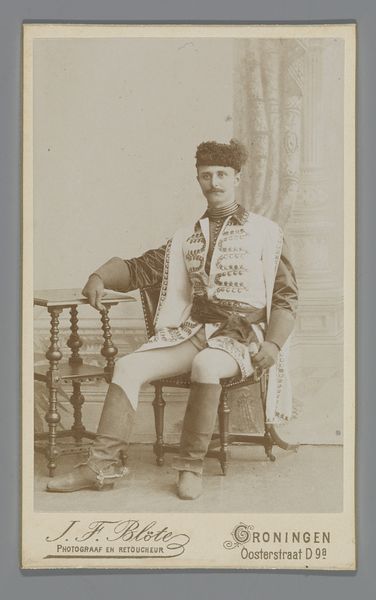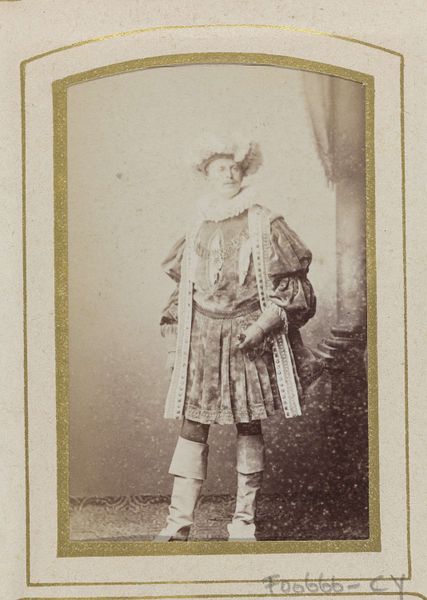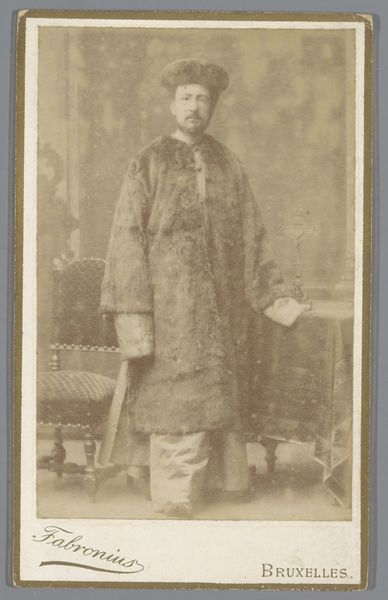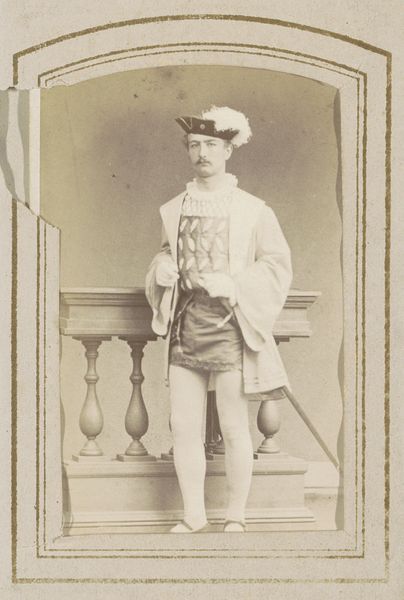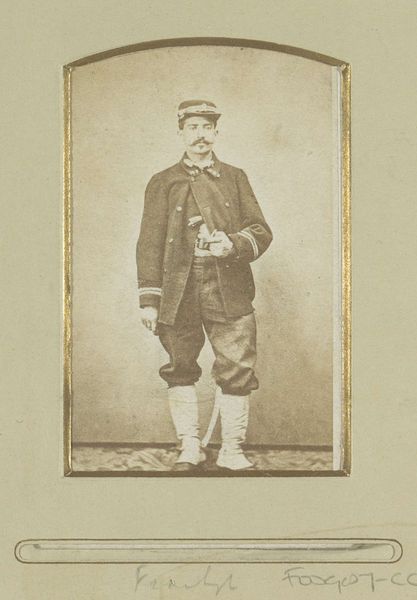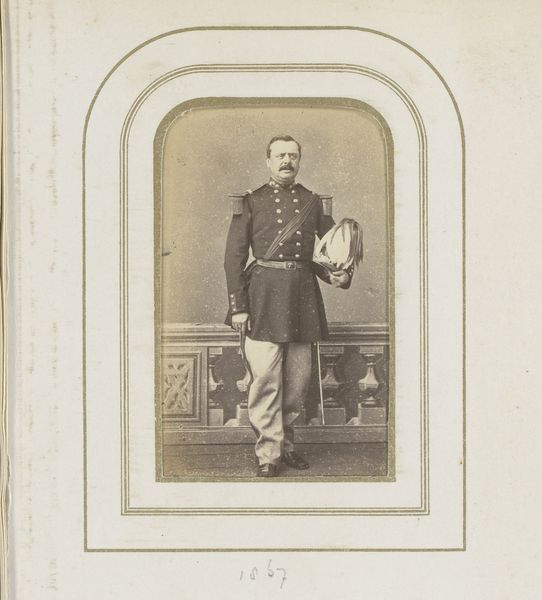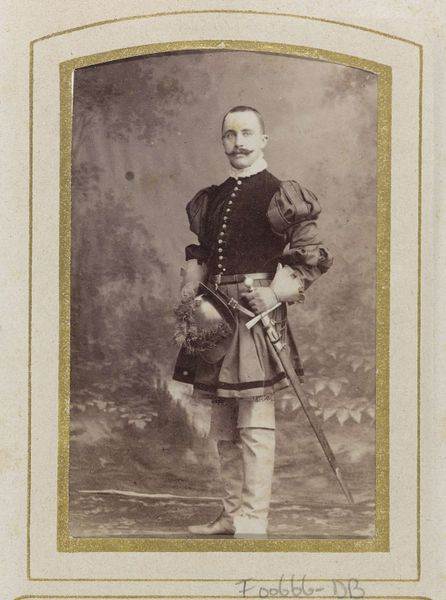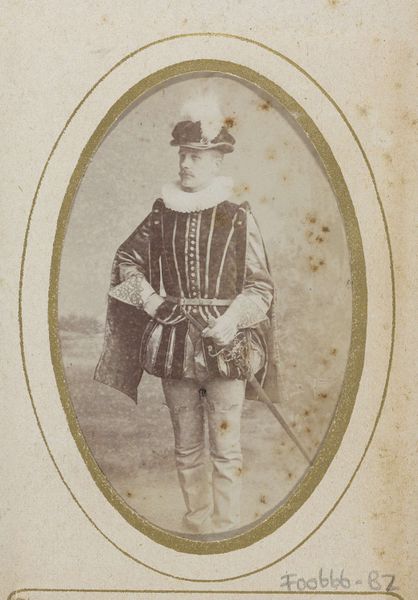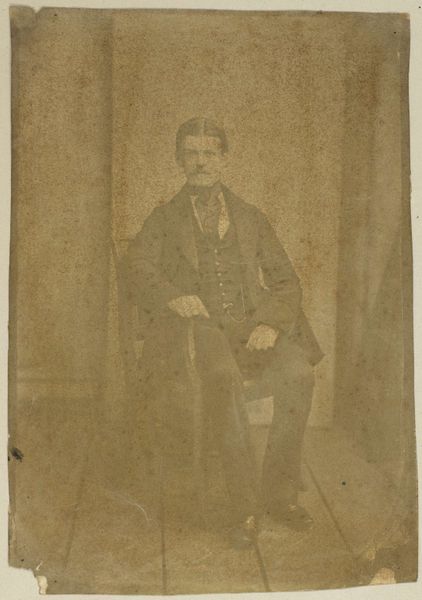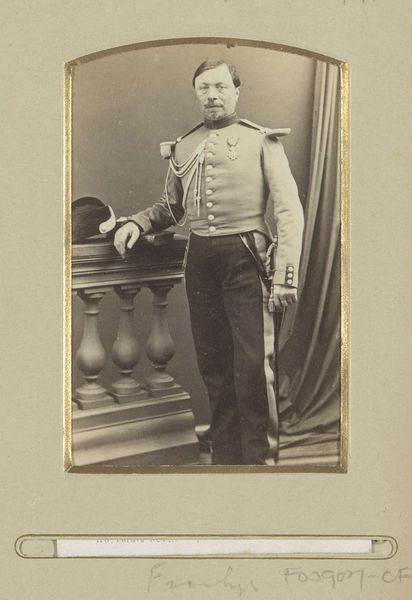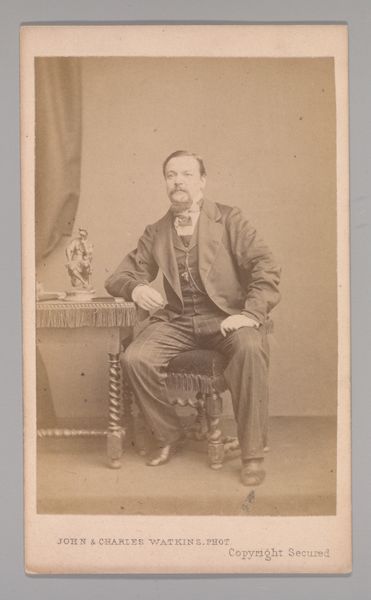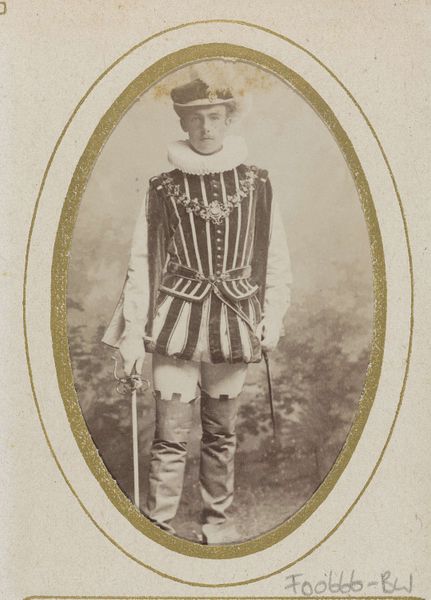
Portret van een (vermoedelijk) Nederlandse militair, staand met sabel en cape c. 1886 - 1901
0:00
0:00
daguerreotype, photography
#
portrait
#
daguerreotype
#
photography
#
historical photography
#
genre-painting
#
realism
Dimensions: height 103 mm, width 62 mm
Copyright: Rijks Museum: Open Domain
Curator: I am immediately struck by the opulence, and yet, it feels…distant. There’s something inherently performative in this type of staged photography. Editor: Indeed. Let's delve deeper. This daguerreotype, titled "Portret van een (vermoedelijk) Nederlandse militair, staand met sabel en cape," depicts what is believed to be a Dutch military officer. The piece dates roughly between 1886 and 1901 and is credited to Johannes Gesterkamp Jr. Curator: A daguerreotype. The materiality of the process is crucial here, of course. Consider the labor involved in each delicate step, from preparing the silvered copper plate to meticulously developing the image with mercury fumes. This isn't simply "taking" a picture. It's painstakingly crafting one. Editor: Precisely! The sheen and almost ghostly quality inherent in daguerreotypes add another layer. Look closely at the cape, how it drapes; its fabric catches light irregularly, suggesting perhaps a cheaper weave imitating higher quality textiles, thus implying complexities around access, class and imitation. Curator: And consider the very intentional pose—rigid, formal, almost mannequin-like. The semiotics of military attire are powerful; each button, the fur trim, speaks to status and hierarchy. There’s a visual grammar at play, composing notions of power and respect, it’s clearly intended for a certain reading of Dutch national identity, and what masculinity means. Editor: I wonder though, was the uniform custom-made, tailored for precision, or was it sourced from a military surplus depot? The material production of such a garment impacts our reading; one reflects privilege and bespoke luxury, while the other speaks to mass manufacturing serving military demand, labor specialization and material standardization. Curator: That's an insightful consideration of production practices within 19th century Netherlands! The artist’s decision to stage it realistically using backdrops rooted within Dutch painting traditions brings elements of genre painting through a new photographic lens to convey ideas related to nationality and status. Editor: Agreed. Looking at it through this context enriches my perception. I now consider what Gesterkamp Jr.’s artistic intention was when employing such techniques alongside careful choices when producing each print with his laborers—or perhaps himself entirely. Curator: Ultimately, beyond merely depicting a military figure, the composition evokes much more than initially meets the eye, it captures something larger than the portrait itself which adds levels upon levels of complex context. Editor: An image brimming not only with representation but with questions about its own making. A worthwhile conundrum.
Comments
No comments
Be the first to comment and join the conversation on the ultimate creative platform.

